Blog
IFAW at 25: building a future where wildlife and people thrive
Read moreAmazing animals with horns: facts and pictures
Animals with horns use them for various purposes, from indicating dominance and fighting over females to playful headbutting contests and self-defence. Though in many species only the males grow horns, there are also multiple examples of females growing horns—which many use to protect their young.
However, for all their uses, horns also present a significant drawback. They are sought after by humans for use as trophies, traditional medicine, and crafting material, increasing the threat of poaching for many species.
IFAW is a conservation and rescue organization dedicated to helping animals thrive. Much of our work involves protecting animals from poaching and trafficking. Learn more about our work and how you can get involved.
Let’s look at some of these fantastic horned species and the threats they face.
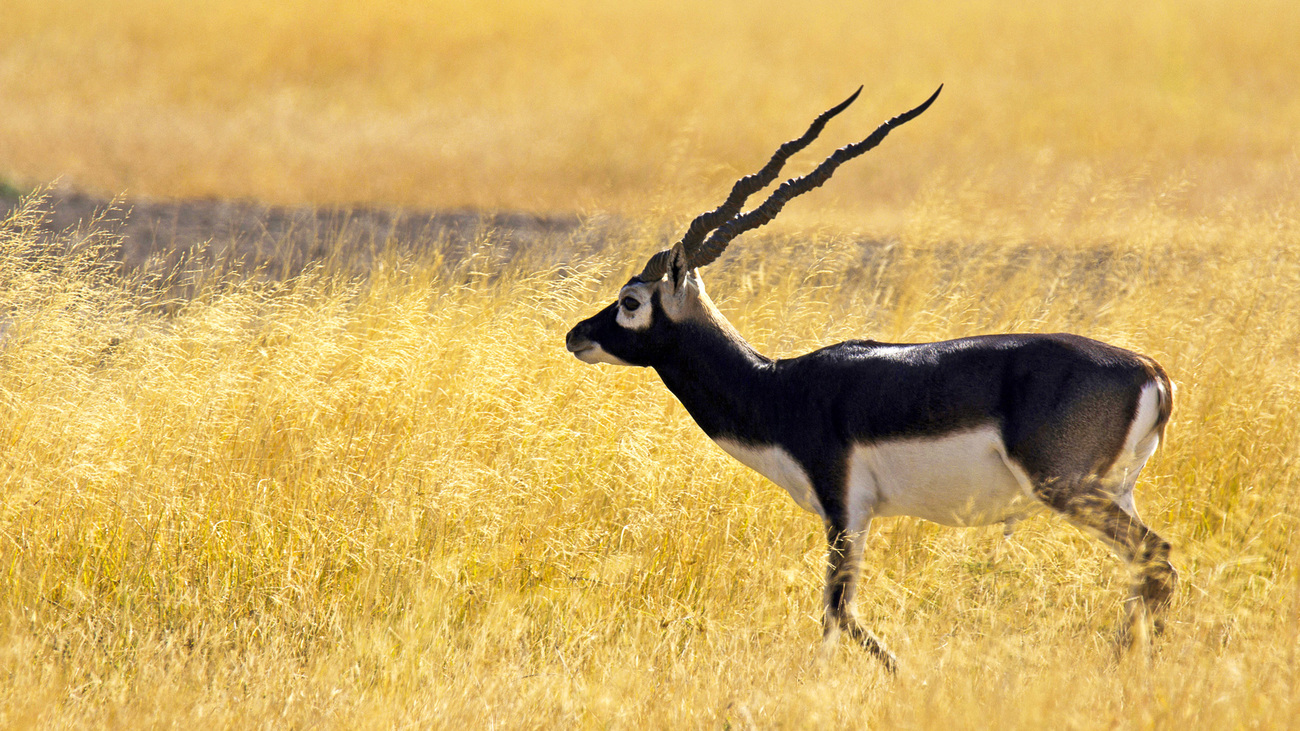
Blackbucks are a species of true antelope that live exclusively on the Indian plains. Only the males have horns, and they are fairly impressive in length. Most are 50 to 61 centimeters long (20 to 24 inches), but the longest on record reached 71.5 centimeters (28.1 inches). The horns are spiral-shaped with deep ridges, creating a very striking look. Though they are listed as least concern by the IUCN, they have suffered from overhunting in the past and have lost large areas of habitat over the last 100 years.
Bighorn sheep are scattered all over the western US, Canada, and Mexico. They’re large, muscular mammals with hooves adapted to climbing and big, curved horns on both sexes. The length of the horns is measured along the outer curvature, and different subspecies have different-sized horns. The Rocky Mountain subspecies have an average horn length of around one meter (3.3 feet). Habitat loss and overhunting in the 1800s brought the species close to extinction, but they’re now listed as least concern and have a stable population.
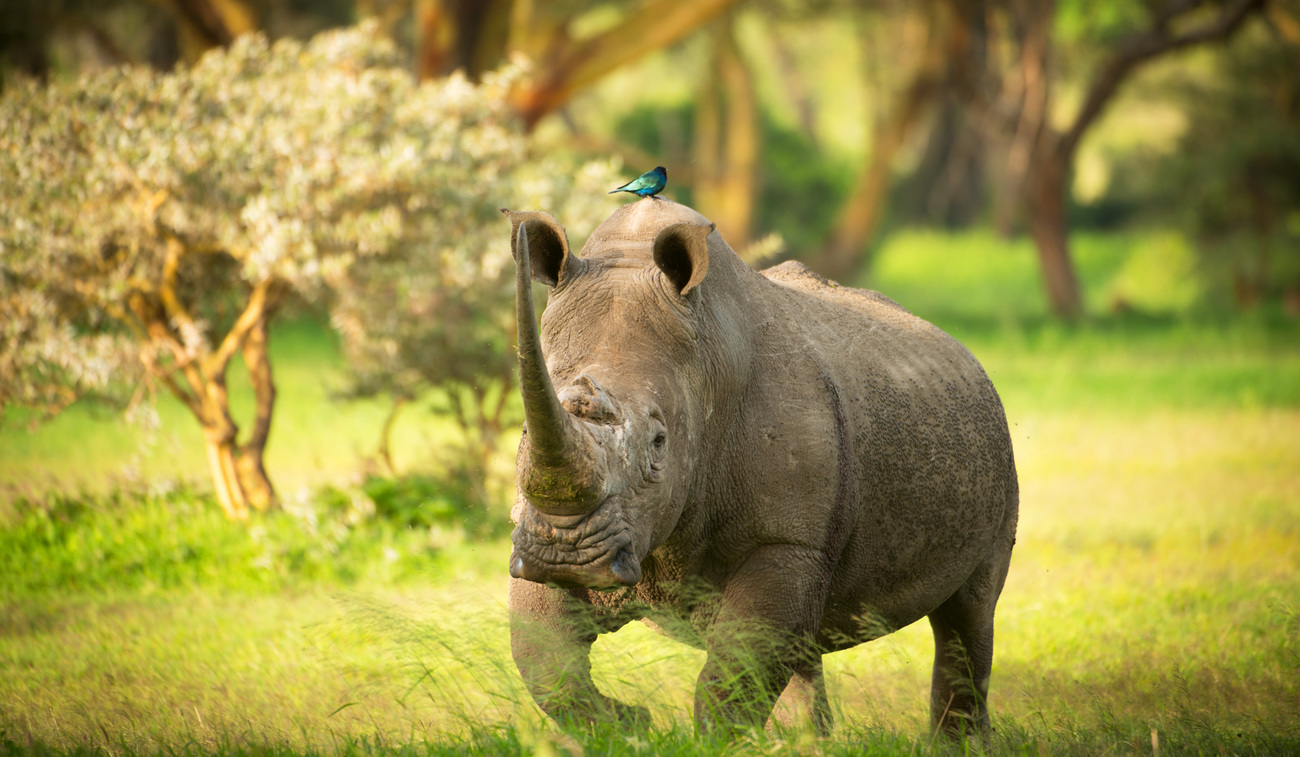
Native to Africa, the white rhino has two impressive horns which grow continuously. Males use their horns to fight other males, and females use them to protect their young. Unfortunately, white rhinos have been a target of poaching for a long time, and many individuals die due to the violent methods poachers use to harvest their horns. The horns are sought after in many countries worldwide, where they are crushed for use in traditional medicine or crafted into decorative dagger handles. The species as a whole is considered near threatened, but one subspecies, the northern white rhino, has only two remaining individuals.
Markhors are a large goat species found in parts of Afghanistan, India, Pakistan, Tajikistan, Turkmenistan, and Uzbekistan. Their horns are longer than these goats are tall, reaching up to 160 centimeters long (63 inches), while their height averages around one meter (40 inches). They have a corkscrew shape with varying numbers of coils. Because of their impressive appearance, markhor horns are often kept as trophies, but the species is primarily hunted for meat. Listed as near threatened, their population is currently increasing, and hunting restrictions in some national parks are being successfully enforced.
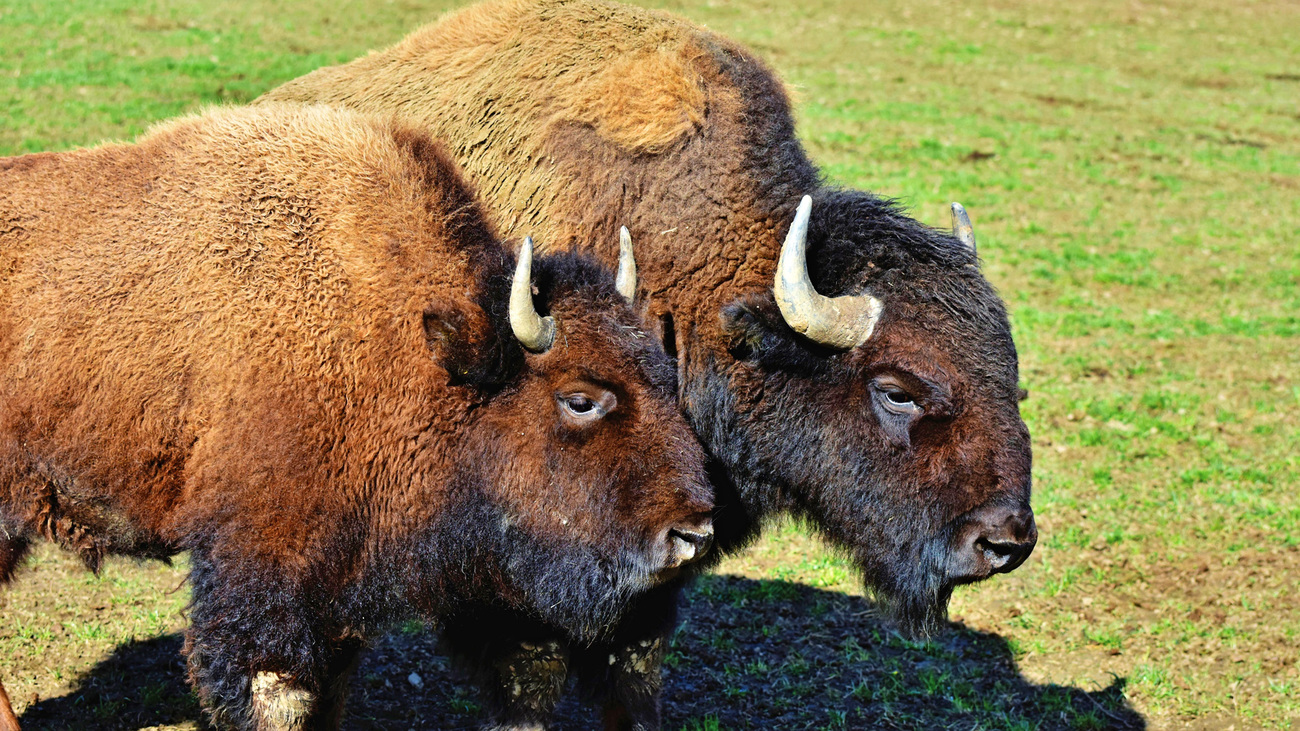
Bison are large grazing mammals that are famous for once being the primary food source for Native Americans. They have short, curved horns that the males use during headbutting contests. Unfortunately, American bison suffered greatly in the 18th and 19th centuries when they were killed for sport, food, and as part of attacks on Indigenous communities. Though they came dangerously close to extinction, they have now recovered significantly. However, they are still listed as near threatened, as they are heavily dependent on conservation programs.
The Scimitar-horned oryx is an antelope once found in multiple African countries both north and south of the Sahara Desert. Both males and females have long, thin, and slightly curved horns that can reach up to 1.2 meters (four feet) in length. This antelope species has suffered from severe hunting, poaching, and habitat loss and was considered extinct in the wild from 2000 to 2016. Recently, a program reintroduced captive oryxes into the wild in Chad, and after five years of successful reproduction was observed, their status was downgraded to endangered.
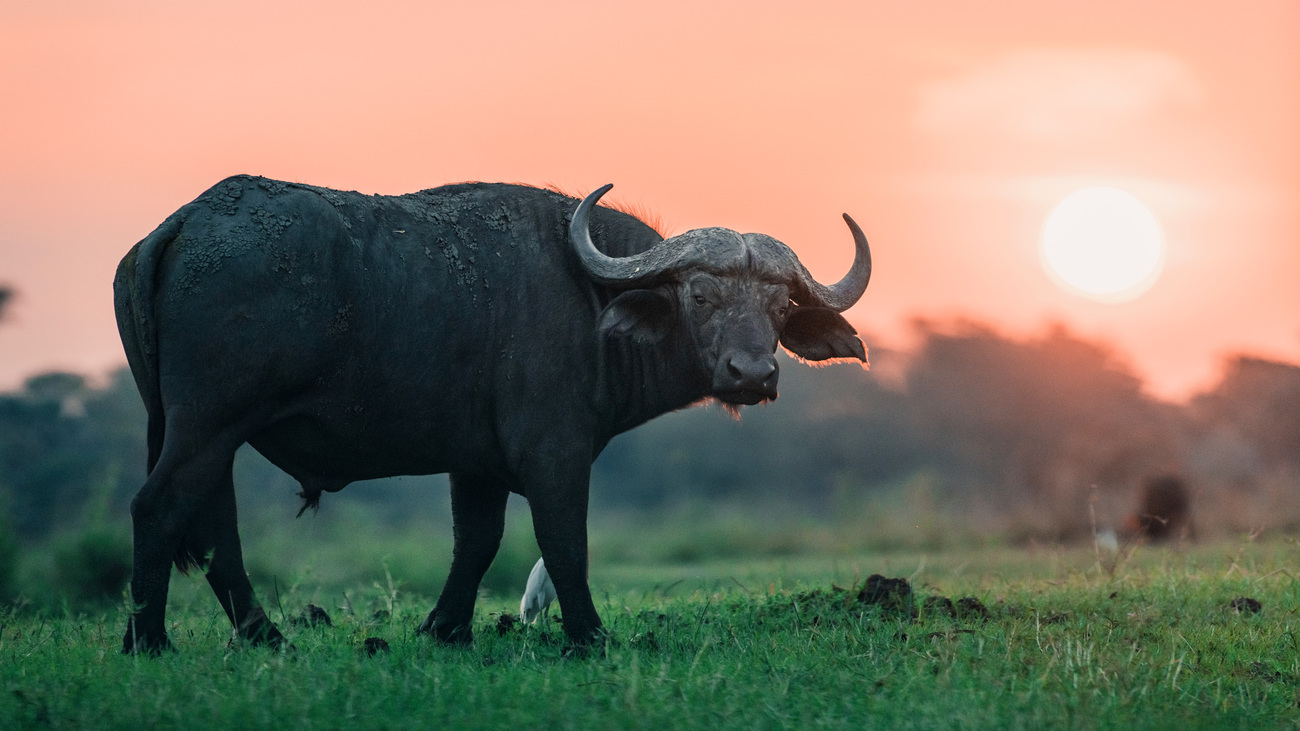
African buffalos are one of three species of true buffalo, and they live in sub-Saharan Africa in rainforests, bushlands, and savannahs. Their horns grow out of the sides of their heads, curving upwards. Their population currently stands at around 400,000 mature individuals, but they are listed as near threatened because their population has seen a notable decline over the last three generations. They are hunted for meat in some areas, but the most severe threat they face is disease. For example, in the 1890s, a plague occurred over much of Africa, killing up to 90% of the buffalo in its reach.
The Nubian ibex is a wild goat that lives in areas of Egypt, Israel, Jordan, Oman, Saudi Arabia, Sudan, and Yemen. Males have long, thin horns that curve backwards and have deep ridges. Illegal hunting, habitat degradation, and fragmentation are major threats to the species throughout most of its range. The IUCN lists the Nubian ibex as vulnerable, with a decreasing population of around 4,500 mature individuals.
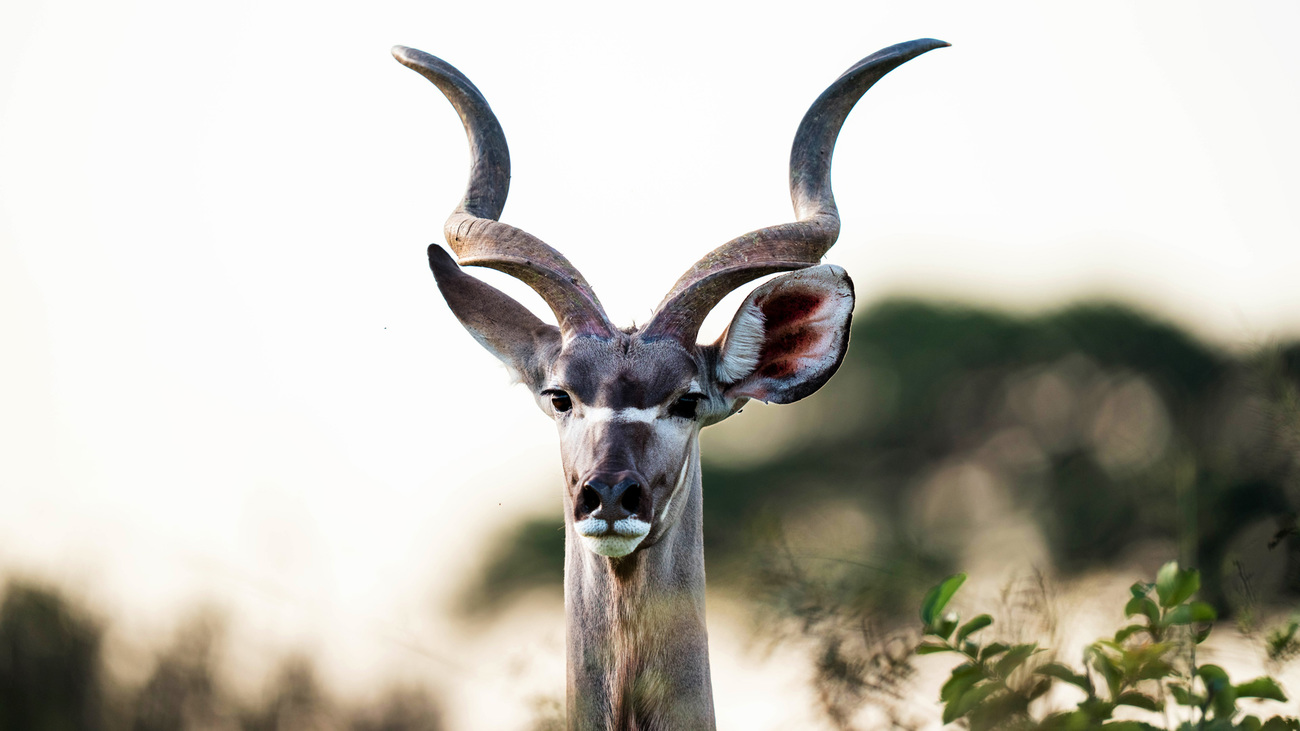
The greater kudu is one of the tallest antelope species and lives across multiple southern African countries, including Tanzania, Namibia, Botswana, and Zimbabwe. Male kudu have the longest horns in the antelope family, reaching up to 180 centimeters in length (71 inches). Their horns spiral outwards in a ‘V’ shape. Greater kudu are listed as least concern and have a stable population of 300,000 to 350,000 mature individuals. They are heavily hunted in some areas, but population growth is healthy enough to sustain the losses.
Otherwise known as Jackson’s three-horned chameleons, the male members of this reptilian species have three horns protruding out of the front of their heads.
These chameleons are 25 to 30 centimeters long (10 to 12 inches) with bright green colouring. They live in Kenya and Tanzania, currently have a stable population, and are listed as least concern on the IUCN Red List. These chameleons are often kept as exotic pets, which means they are caught, taken out of their natural habitat, and traded around the world.
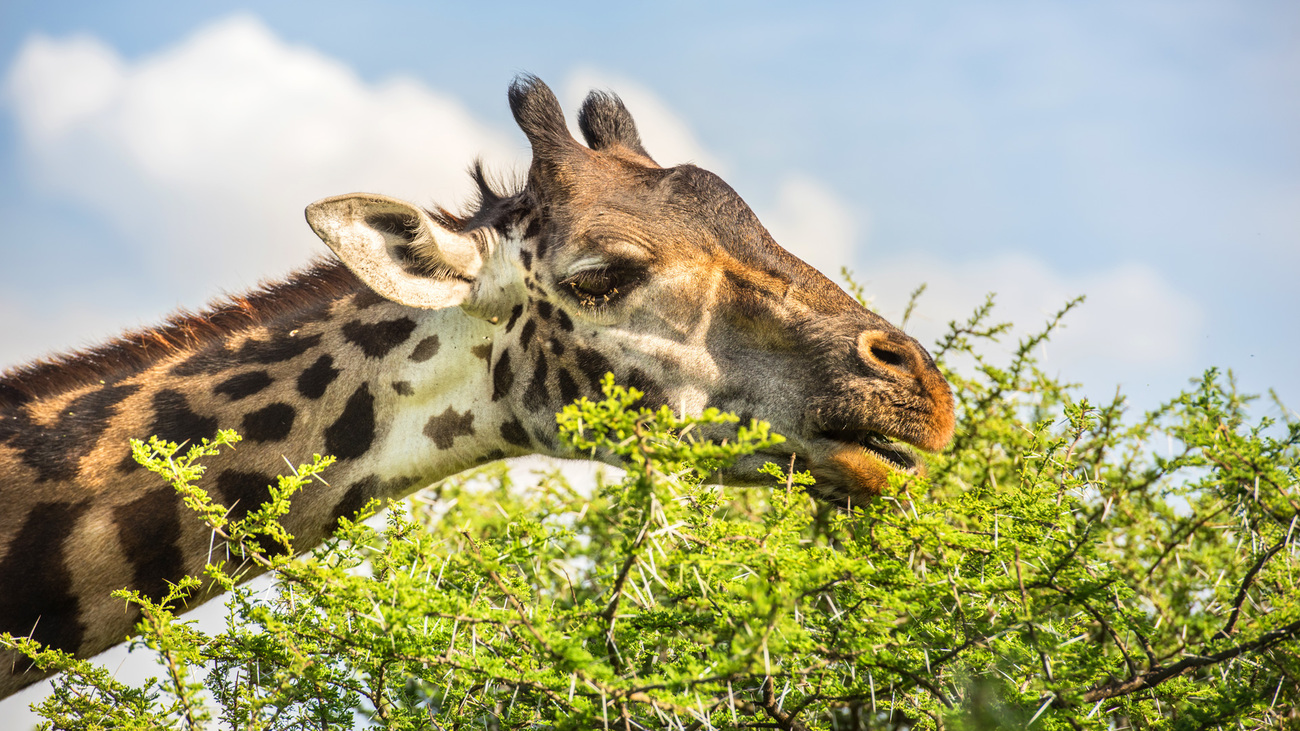
Though more famous for their height, giraffes also have horn-like protrusions on their heads. The technical name for giraffe ‘horns’ is ossicones, and they’re actually made out of bone and covered in skin. Giraffes live in various areas of Africa, including Botswana, Chad, Ethiopia, Kenya, South Africa, and Uganda. They were classified as vulnerable in 2016 due to an observed decline in population over the past three generations. The four major threats giraffes face are habitat loss, civil unrest, illegal hunting, and ecological changes.
The largest of all antelope species, the giant eland, can reach up to 182 centimeters tall (six feet) with horns as long as 123 centimeters (48 inches). Their horns are thick and heavy with a twisted pattern at the base. They live in a few countries in Africa, including Cameroon, Chad, Guinea, Mali, Senegal, and South Sudan. Due to their declining population, the species is listed as vulnerable, and they face threats such as bushmeat hunting and disease.

The impala is an abundant antelope species found in several African countries, including Angola, Botswana, Rwanda, Tanzania, and Zambia. Male impalas have large, backward-facing horns that average 45 to 91 centimeters long (18 to 36 inches). The overall impala population is currently around 2,000,000 individuals. Despite their large population and classification as least concern, they do still face the threat of poaching.
All of these animals are extremely important members of their ecosystems, with many turning hard-to-digest plants and shrubbery into consumable energy for other species. We must protect them so we can protect these ecosystems as a whole.
At IFAW, we work to fight wildlife crime and the trade of illegal animal products such as horns. By campaigning to reduce demand, change policies, and stop traffickers, we hope to one day end unsustainable hunting and poaching.
every problem has a solution, every solution needs support.
The problems we face are urgent, complicated, and resistant to change. Real solutions demand creativity, hard work, and involvement from people like you.
Unfortunately, the browser you use is outdated and does not allow you to display the site correctly. Please install any of the modern browsers, for example:
Google Chrome Firefox Safari